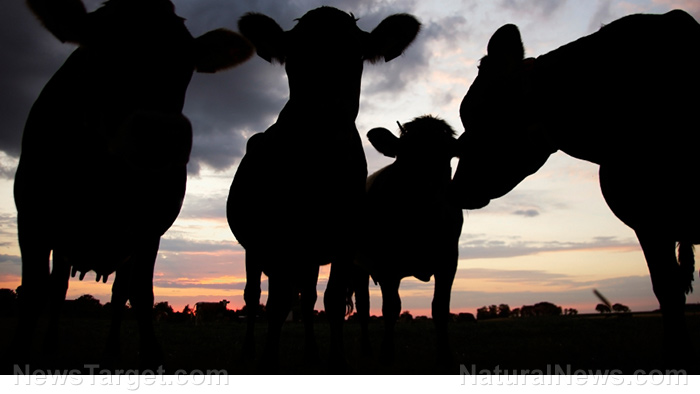
The National Drought Monitor attested to this extreme weather condition, saying that the western U.S. is experiencing a so-called "megadrought" – the region's worst in 1,200 years. It pointed out that more than 80 percent of the Lone Star State is facing exceptional drought conditions most of the year.
Jim Ferguson, a rancher from the Texas High Plains, told local TV station KAMR: "We'll keep selling cows till it rains." He added that he sells the older cows in his herd as he gets the best price for them compared to the younger cows. But if weather forecasts do not predict upcoming rain, which would provide lush grass for his cattle to eat, he might sell the younger calves sooner.
Ferguson is not alone in this sentiment. Other farmers like him do not have a choice but to sell off their breeding stock, which they rely on to produce the next generation of cows.
Even the beef supply chain has borne the brunt of the drought in Texas, with buyers projecting higher meat prices for at least the next two years.
"The lack of water, in general, is hurting us all the way around – any way you can think of," said cattle buyer Josh Sturgeon. He had come to the cattle auction in search of deals from ranchers like Ferguson, who are forced to liquidate their cattle herds due to the lack of water to grow their food or money to buy cattle feeds.
"Cattle drink a lot of water, especially this time of year," said Sturgeon, expressing hesitation about whether he should buy cattle at the time. "With this drought, they're drinking a lot of water. Cattle are dying because of this; even the best of cattle are struggling."
Health Ranger confirms cattle liquidations in Texas
In a July 25 podcast, Health Ranger Mike Adams touched on the cattle sell-offs in the Lone Star State. The Natural News and Brighteon.com founder cited several Texas ranchers who told him that cattle liquidation in the state is up by 80 percent.
"This is happening due to the extended drought affecting Texas, Oklahoma and much of the southern and western parts of the country," he explained.
"The drought not only reduces grass production in the fields being grazed by cows, but it also causes hay production to plummet, reducing the future food supply that could keep cows fed through the fall and winter."
According to Adams, this will cause a temporary glut of beef in the food supply chain and would lower beef prices in the short term. But by the year 2025, the prices will surely skyrocket as cattle remain in short supply. (Related: More calf-producing cattle are being sold for slaughter, decimating cattle herds and making beef prices surge.)
"It takes several years of good rain to replenish cattle populations and bring beef prices back into an affordable range," said the Health Ranger.
In the meantime, Texans would have to put up with the drought.
"The way the weather pattern looks, it's going to be like that for a while," said Texas State Climatologist John Nielsen-Gammon.
Visit FoodCollapse.com for more stories about the disruption of the food supply and the global food economy.
Listen to the Health Ranger's July 25 "Situation Update" that touches on the cattle liquidations in Texas.
This video is from the Health Ranger Report channel on Brighteon.com.
More related stories:
Intense DROUGHT driving Texas ranchers to sell off cattle herds.
Texas drought could eclipse drought of 2011, the state's worst on record.
Drought-stricken Texas finally gets some rain, but it may not be enough to save crops and cattle.
5 Texas counties designated natural disaster areas as drought continues to ravage the state.
Sources include:
Please contact us for more information.























